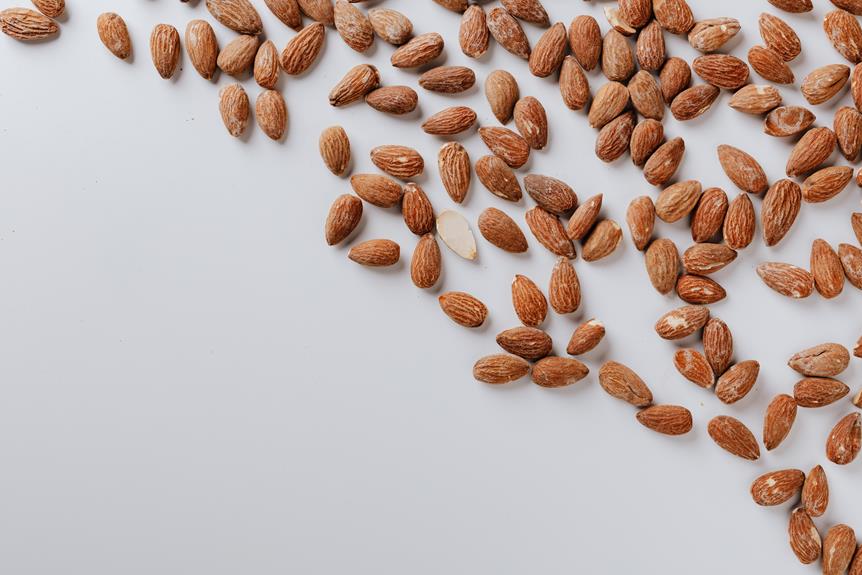A nut-free diet can be a complex yet necessary task for those with nut allergies or sensitivities. Meal planning plays a vital role in ensuring that individuals with nut allergies can enjoy a varied and nourishing diet without compromising their health.
With the prevalence of nut allergies on the rise, it is crucial to carefully consider and plan meals that are free from nuts while still being nutritious and satisfying.
Whether you have a nut allergy or are cooking for someone who does, these meal ideas and tips will help you create a diverse and satisfying menu that is free from any nut-related concerns.
Benefits of a Nut-Free Diet
There are several advantages to following a nut-free diet. A a nut-free diet promotes inclusivity and a sense of belonging, particularly in social situations where nuts may exclude individuals with allergies.
One benefit of a nut-free diet is the availability of alternatives for baking. You can still enjoy delicious baked goods without worrying about nut cross-contamination.
There are various substitutes, such as seed butter or purees, that provide similar texture and flavor in your favorite recipes. From cookies to cakes, these alternatives allow you to indulge in sweet treats while maintaining a nut-free diet.
Another advantage of following a nut-free diet is the ease of finding alternatives for school lunches. Many schools have strict nut-free policies to protect students with allergies. By following these guidelines, you can ensure the safety and well-being of all students.
Nut-free options like sunflower seed butter sandwiches or fruit and vegetable snacks provide nutritious alternatives that can be enjoyed by everyone.

Understanding Nut Allergies
To ensure the safety of individuals with severe nut allergies, it’s crucial to understand the nature of these allergies and how they affect those affected by them. Nut allergies are a type of food allergy that occurs when the immune system mistakenly identifies proteins in nuts as harmful substances.
This leads to an allergic reaction, which can range from mild symptoms like itching and hives to more severe reactions like difficulty breathing and anaphylaxis. The exact causes of nut allergies aren’t fully understood, but it’s believed to be a combination of genetic and environmental factors.
Even small amounts of nut exposure can be life-threatening for those with severe nut allergies.
To better understand the risks associated with nut allergies, it’s important to be aware of the potential for cross-contamination. Cross-contamination occurs when nuts or traces of nuts come into contact with other foods during processing, handling, or cooking.
This can happen in kitchens, restaurants, or even at home. To minimize the risk, individuals with nut allergies should carefully read food labels, inform restaurant staff about their allergies, and avoid consuming foods that may have come into contact with nuts.
It’s also important to educate friends, family, and coworkers about the seriousness of nut allergies to create a safe and inclusive environment for those affected.
Essential Nut-Free Pantry Staples
Maintaining a nut-free diet requires having pantry staples that are completely free from nuts. These staples not only ensure the safety of your meals and snacks but also provide the necessary ingredients for delicious dishes.
Here are three essential items for your nut-free pantry:
- Nut-free baking substitutes: Baking without nuts can be challenging, but there are plenty of alternatives available that offer the same texture and flavor. Look for ingredients like sunflower seed butter, pumpkin seed butter, or soy nut butter. These substitutes can be used in recipes that call for nuts, such as cookies, cakes, and granola bars.
- Nut-free school lunch ideas: Packing a safe and nutritious school lunch can be a struggle if you or your child has a nut allergy. However, there are plenty of delicious options that are nut-free. Consider including items like turkey and cheese roll-ups, hummus and veggie wraps, or yogurt with granola and fruit. These ideas will keep your child’s lunchbox exciting and provide them with the necessary nutrients to stay fueled throughout the school day.
- Nut-free snacks: Having a variety of nut-free snacks on hand is important for quick pick-me-up moments. Stock your pantry with options like popcorn, pretzels, rice cakes, roasted chickpeas, or dried fruit. These snacks aren’t only convenient but also delicious and satisfying.
Meal Planning Basics
Now that you have your essential nut-free pantry staples, it’s time to learn the basics of meal planning. Meal planning helps you stay organized, save time, and enjoy delicious nut-free meals throughout the week. Let’s dive into some meal planning tips and a grocery shopping guide to help you get started.
Set aside some time each week to plan your meals. Look at your schedule and determine how many meals you need to prepare. Consider your dietary preferences and any upcoming special occasions or events.
Create a meal plan for the week. Choose a variety of nut-free recipes that fit your dietary needs. Include a mix of protein, fruits, vegetables, and grains to ensure a balanced diet.
Once you have your meal plan, make a grocery shopping list. Take stock of what you already have in your pantry and fridge, and then write down the ingredients you need to buy. This will help you stay organized and avoid purchasing unnecessary items.
When you go grocery shopping, stick to your list and avoid the nut aisle. Take the time to carefully read labels and ensure that the products you buy are free from nuts or nut traces.
Nut-Free Protein Sources
Including a variety of protein sources in your meal plan is important for a balanced diet, especially if you have a nut allergy. Here are three plant-based alternatives that are both protein-packed and allergy-friendly:
- Beans and Legumes: Incorporate chickpeas, lentils, and black beans into your meals. These legumes aren’t only high in protein but also packed with fiber, vitamins, and minerals. You can add them to salads, and soups, or make delicious veggie burgers or hummus.
- Quinoa: Quinoa is a versatile grain that’s gluten-free and a great source of protein. It contains all nine essential amino acids, making it a complete protein. Use quinoa as a base for salads or as a substitute for rice in various dishes.
- Tofu: Tofu is a popular protein source for those following a plant-based diet. Made from soybeans, it’s a great alternative to meat. Tofu can be grilled, stir-fried, or added to soups and stews. It absorbs flavors well, making it a versatile ingredient in many allergy-friendly recipes.
Delicious Nut-Free Breakfast Ideas
Start your day off right with these delicious and nut-free breakfast ideas. When you’re on a nut-free diet, it’s important to find alternatives that are just as tasty and satisfying. Luckily, there are plenty of options to choose from.
If you enjoy baking, try out some nut-free recipes to kickstart your day. Make a batch of fluffy pancakes using oat flour or whip up some nut-free granola bars for a quick and easy breakfast on the go. You can also try making nut-free muffins with blueberries or bananas for a sweet treat that’s both nut-free and delectable.
For a quick and refreshing option, consider nut-free smoothies. Blend your favorite fruits like strawberries, mangoes, and bananas with dairy-free milk for a creamy and nutritious breakfast smoothie. You can even add some spinach or kale for an extra boost of vitamins and minerals.
No matter your taste preferences, there are plenty of delicious nut-free breakfast ideas to satisfy your cravings. With these options, you can start your day off right and feel nourished and content.
Lunch and Dinner Nut-Free Recipes
Looking for delicious and nut-free options for lunch and dinner? Try these flavorful recipes that will satisfy your taste buds. Here are three nut-free lunch ideas and dinner recipes that are sure to please:
- Chicken Stir-Fry: Enjoy a healthy and nutritious meal with this easy-to-make chicken stir-fry. Simply sauté chicken breast, and colorful vegetables like bell peppers and broccoli, and season with soy sauce, garlic, and ginger. Serve over rice or noodles for a filling lunch or dinner option.
- Spaghetti Bolognese: Indulge in a classic Italian dish with a nut-free twist. Brown ground beef or turkey in a pan, then add onions, garlic, and tomato sauce. Let it simmer for a rich and flavorful sauce. Serve over gluten-free or regular spaghetti for a comforting and satisfying meal.
- Quinoa Salad: For a light and refreshing lunch option, try a quinoa salad packed with fresh vegetables and herbs. Cook quinoa according to package instructions and let it cool. Toss it with diced cucumbers, cherry tomatoes, chopped parsley, and a lemon vinaigrette dressing. This nutritious salad can be enjoyed on its own or as a side dish.
These nut-free lunch ideas and dinner recipes aren’t only delicious but also safe for those with nut allergies. Give them a try and enjoy a variety of satisfying meals without worrying about nuts.
Nut-Free Snack Options
Looking for nut-free snacks? Don’t worry, there are plenty of delicious options available! One great idea is to bake your treats using alternative ingredients like seeds, oats, or dried fruits. These homemade goodies aren’t only safe for those with nut allergies, but they’re also packed with flavor and nutrition.
If you need convenient snacks on the go, consider packing fresh fruit like apple slices or grapes, along with cheese sticks or yogurt cups. These options aren’t only tasty but also provide a balanced mix of nutrients to keep you energized throughout the day.
When it comes to school lunches, it’s important to choose nut-free options to ensure the safety of all students. Instead of peanut butter and jelly sandwiches, try using alternatives like sunflower seed butter or soy nut butter. Pair it with fresh veggies and hummus for a satisfying and nutritious meal.
Quick and Easy Nut-Free Desserts
If you have a nut allergy and need quick and easy desserts, there are plenty of delicious options to satisfy your sweet tooth. Don’t worry, you can still enjoy tasty treats without compromising your health. Here are some allergy-friendly baking ideas for you:
- Fruit Parfait: Layer your favorite fruits like strawberries, blueberries, and bananas with dairy-free yogurt and top it off with a sprinkle of granola for a crunchy twist. It’s a refreshing and nutritious dessert that you can whip up in minutes.
- Chocolate Avocado Mousse: This creamy and indulgent dessert is a perfect alternative to traditional chocolate mousse. Simply blend ripe avocados, cocoa powder, a sweetener of your choice, and a dash of vanilla extract. Chill it in the fridge for a few hours, and you’ll have a rich and velvety mousse that will satisfy your chocolate cravings.
- Oatmeal Raisin Cookies: These classic cookies are nut-free and incredibly easy to make. Mix oats, raisins, dairy-free butter, brown sugar, and a touch of cinnamon. Bake them in the oven until golden brown, and you’ll have a batch of chewy and delicious cookies ready to be enjoyed.
With these quick and easy nut-free desserts, you can still indulge in sweet treats without worrying about your allergies. Enjoy the flavors and textures that these allergy-friendly baking ideas bring and satisfy your cravings with confidence.
Meal Prep Tips for a Nut-Free Diet
To successfully navigate a nut-free diet, it’s important to incorporate efficient meal prep strategies into your routine. By planning and preparing your meals in advance, you can ensure that you have delicious and satisfying options that are safe for you to eat.
When meal-prepping for a nut-free diet, there are a few key tips to keep in mind. First, create a meal plan for the week ahead. This will help you stay organized and ensure that you have all the ingredients you need on hand. Look for recipes that don’t contain nuts or can easily be modified with nut-free alternatives.
Instead of using almond flour, for example, try using oat flour or coconut flour in your baking. You can also swap out nuts for seeds like sunflower or pumpkin seeds in recipes like granola or energy bars.
Batch cooking is another important tip. Spend a few hours on the weekend cooking up large batches of your favorite nut-free dishes, then divide them into individual portions to enjoy throughout the week. This will save you time and ensure that you always have a nut-free option available.
Conclusion
Adopting a nut-free diet can be beneficial for those with allergies or sensitivities. It’s important to note that approximately 1 in 13 children in the United States have a food allergy, with nuts being one of the most common triggers.
By incorporating nut-free pantry staples, protein sources, and delicious recipes, you can enjoy a diverse and satisfying meal plan while prioritizing your health.
Start planning your nut-free meals today and discover a whole new world of culinary possibilities.









